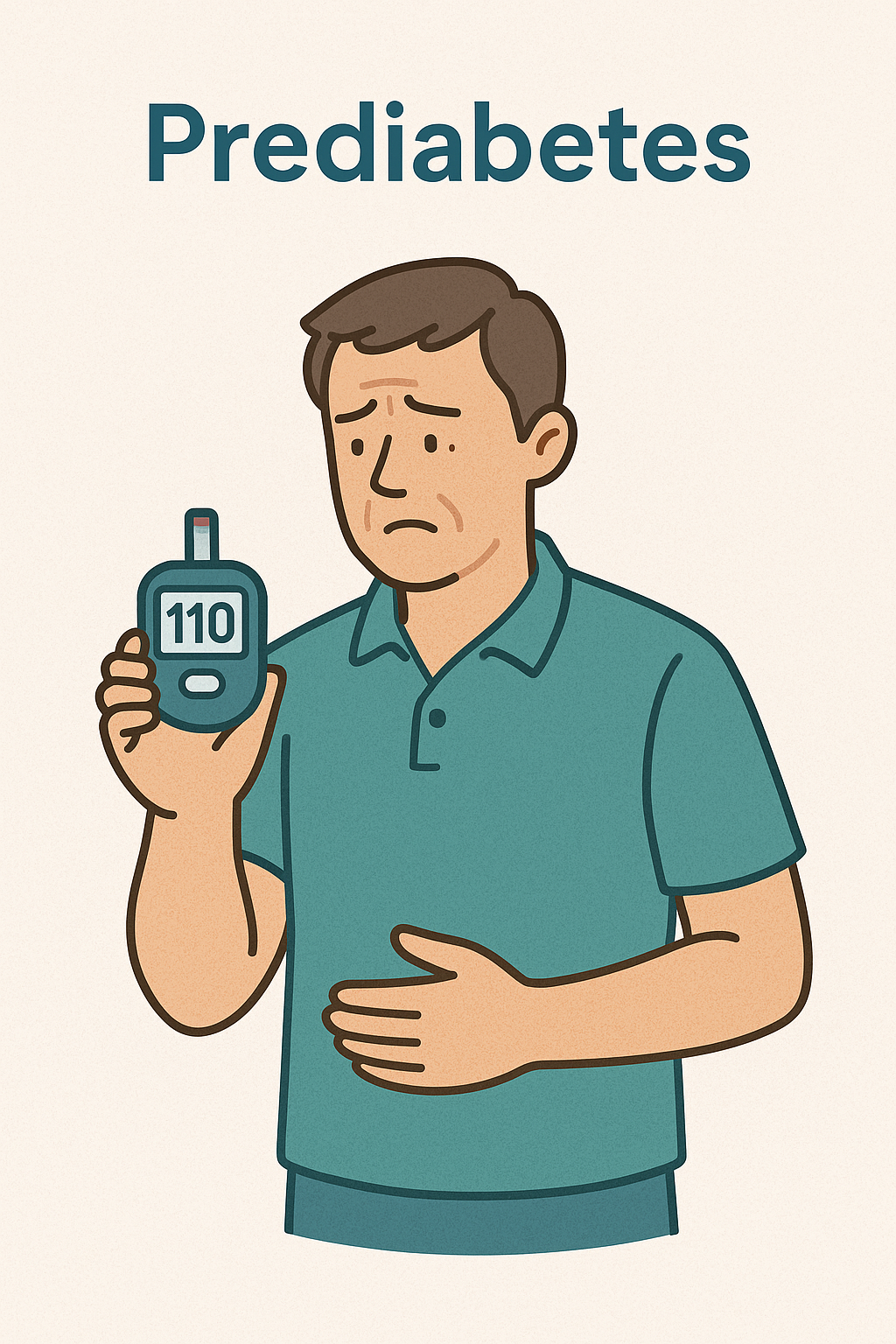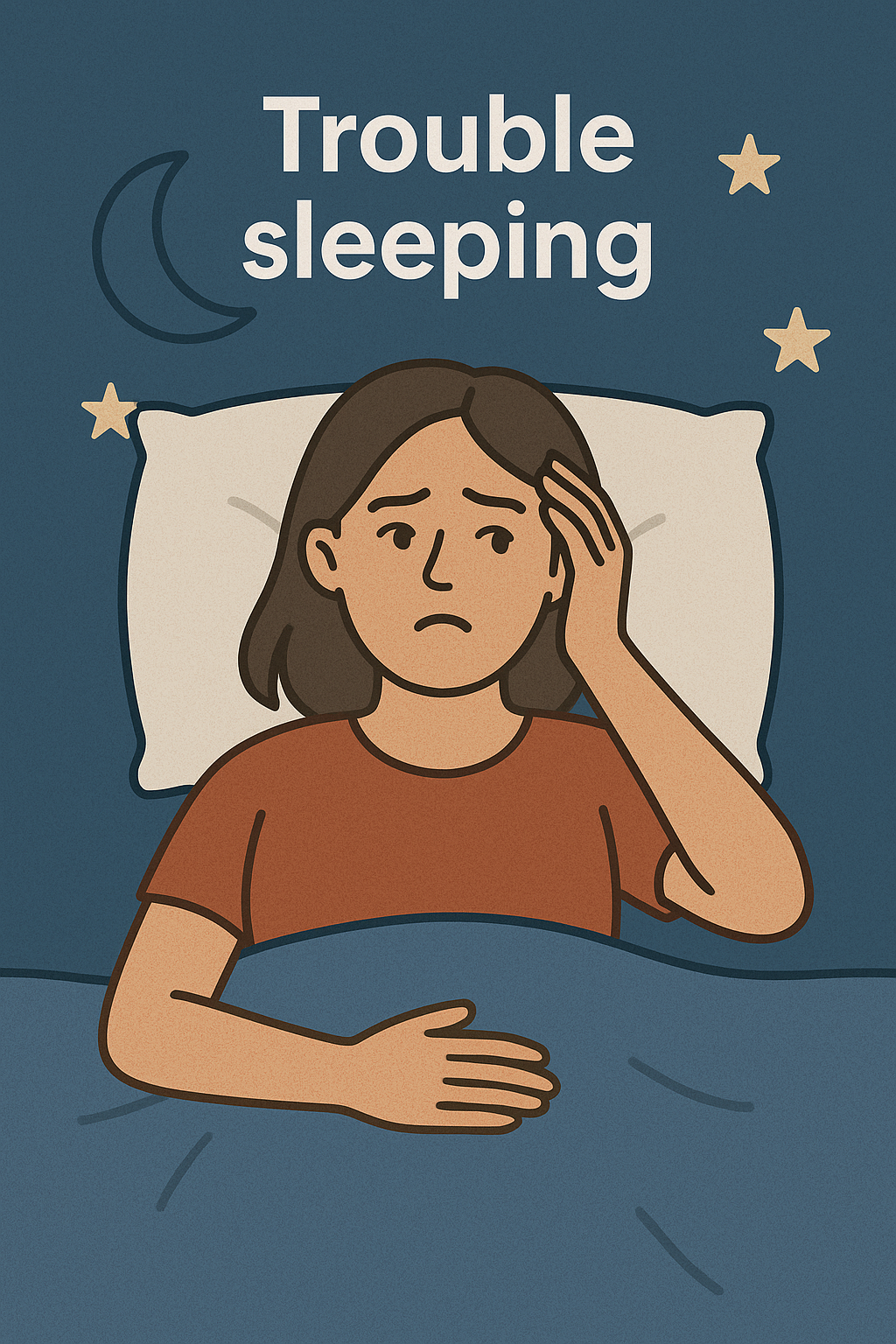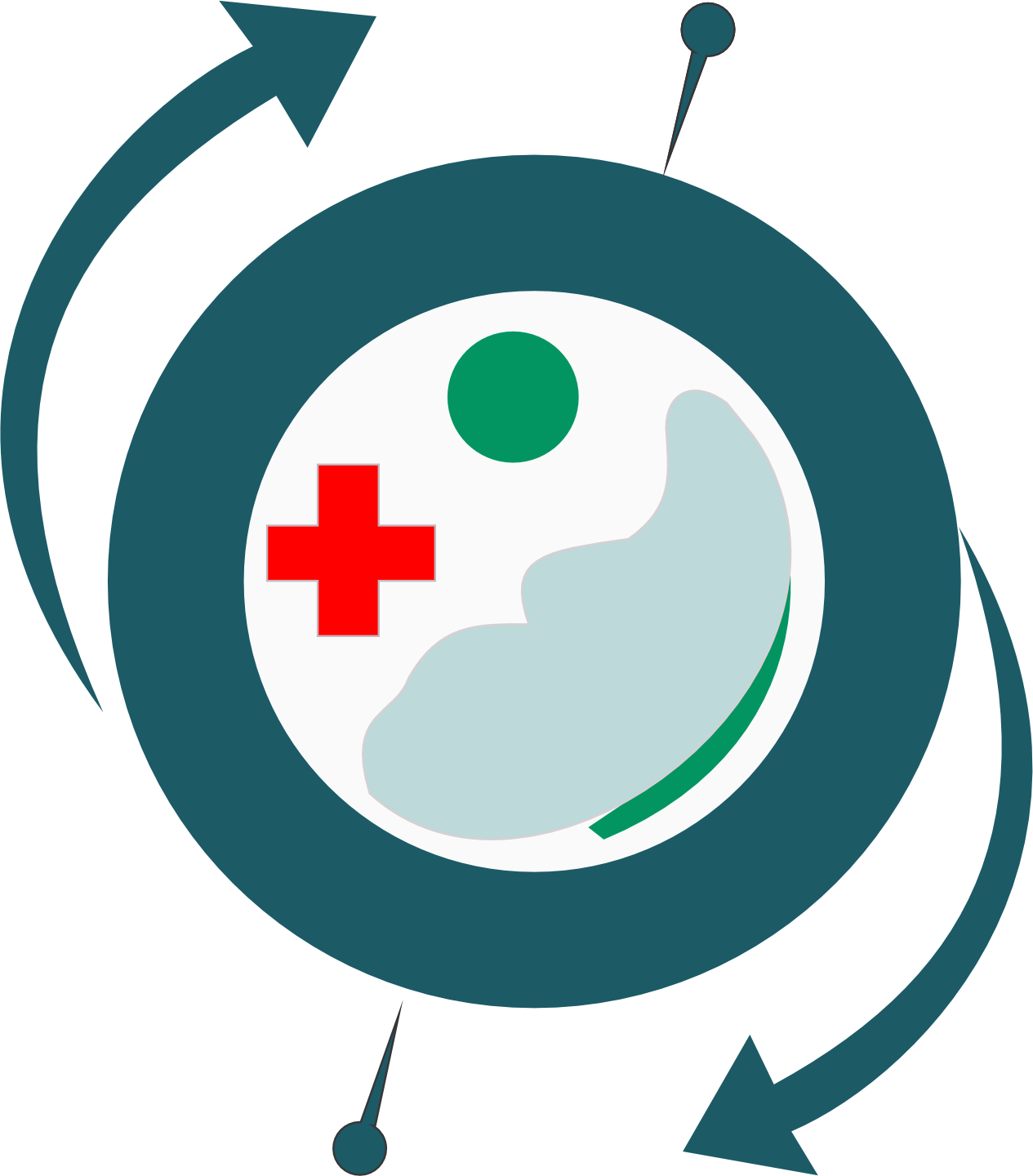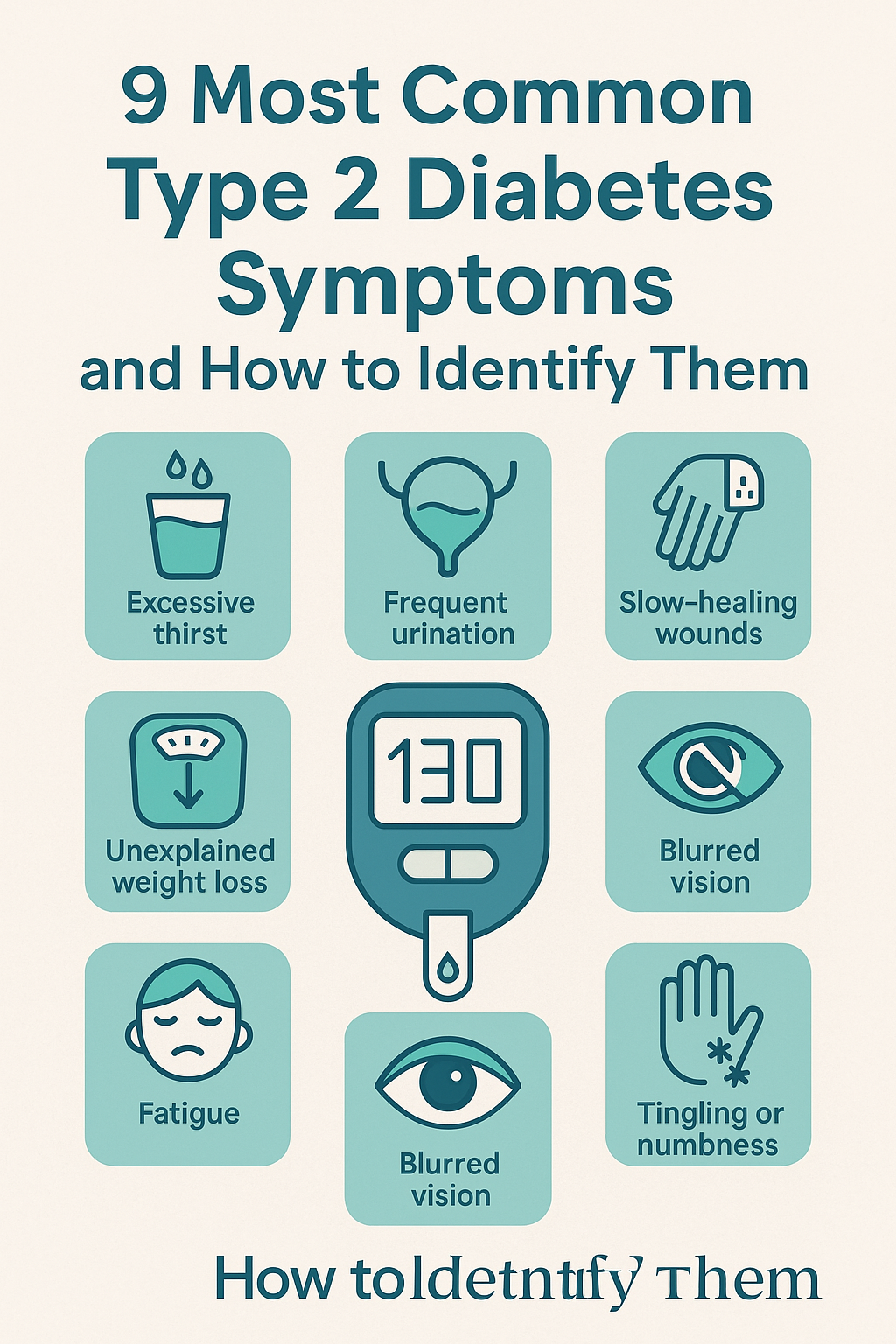9 Most Common Type 2 Diabetes Symptoms and How to Identify Them
Type 2 diabetes is a chronic condition that can develop silently over the years. Often, symptoms appear subtly, making early diagnosis difficult. Identifying type 2 diabetes symptoms in the early stages is essential to avoid serious complications such as heart disease, kidney failure, and vision problems.
In this article, we’ll explain the main signs of type 2 diabetes so you can recognize them quickly and seek medical advice.
Why it’s important to recognize type 2 diabetes symptoms
Most people with type 2 diabetes don’t know they have the disease until complications appear. This happens because symptoms are often mistaken for tiredness, poor diet, or natural aging.
In addition to preventing complications, recognizing type 2 diabetes symptoms early allows people to take ownership of their health. Many individuals discover they have diabetes only after being hospitalized for a serious condition like a heart attack, stroke, or uncontrolled infection.
Detecting the signs early can also significantly reduce healthcare costs and improve long-term outcomes. Lifestyle changes are often more effective and easier to implement when the disease is still in its initial stage.
Moreover, early diagnosis helps avoid the emotional burden associated with chronic illness progression, such as anxiety, depression, or fear of losing mobility or vision.
1. Excessive thirst (polydipsia)
Constant thirst is one of the most frequent symptoms of type 2 diabetes. It happens because excess blood sugar leads to dehydration, forcing the body to seek more fluids.
2. Frequent urination (polyuria)
With increased fluid intake, there’s also a need to urinate more often. The body tries to eliminate excess glucose through urine, leading to more trips to the bathroom.
3. Constant hunger (polyphagia)
Even after eating, a person may still feel hungry. That’s because insulin isn’t working properly, making it hard for glucose to enter cells, resulting in low energy.
4. Unexplained weight loss
Despite increased food intake, many people with type 2 diabetes lose weight without a clear reason. This happens because the body starts burning fat and muscle to get energy, as glucose isn’t being properly absorbed by cells.
5. Fatigue and frequent tiredness
Persistent tiredness is one of the most reported type 2 diabetes symptoms. Lack of energy caused by poor glucose utilization directly affects daily activities, leading to physical and mental exhaustion.
6. Blurred vision
Excess glucose can affect the eye lens, causing visual distortions. Blurred vision can appear temporarily or persist, especially when blood sugar levels remain high over time.
7. Slow-healing wounds
People with type 2 diabetes often have trouble healing wounds. High blood sugar weakens the immune system and affects circulation, making it harder for tissues to regenerate.
8. Tingling or numbness in hands and feet
This symptom is an early sign of diabetic neuropathy, a common complication of type 2 diabetes. Excess glucose damages peripheral nerves, causing sensations like tingling, burning, or loss of feeling.
9. Frequent infections
People with type 2 diabetes are more prone to infections, especially urinary, gum, and skin infections. This is due to a weakened immune system, which becomes less effective in fighting off pathogens.
Differences between type 1 and type 2 diabetes symptoms
Although some signs overlap, type 2 diabetes symptoms develop slowly and subtly, while type 1 diabetes usually appears suddenly, especially in children and teenagers.
Type 1 diabetes symptoms
- Appear quickly
- Rapid weight loss in a short time
- Nausea and vomiting
- Possible diabetic ketoacidosis (medical emergency)
Type 2 diabetes symptoms
- Develop slowly and gradually
- Often ignored or misattributed
- Can go unnoticed for years
- More common in adults, especially over age 40
The importance of early diagnosis
The sooner type 2 diabetes symptoms are identified, the better the chances of avoiding serious complications. Early diagnosis allows for lifestyle changes, a healthy diet, physical activity, and, if necessary, medication to manage blood sugar levels.
Additionally, early detection helps prevent cardiovascular diseases, kidney problems, neuropathy, and retinopathy — common complications for those who live with untreated diabetes for a long time.
When to see a doctor

If you experience type 2 diabetes symptoms like unexplained fatigue, excessive thirst, or persistent blurry vision, it’s critical to seek medical advice. These symptoms may not seem severe at first, but they indicate that your blood sugar may already be out of balance.
Don’t rely on online symptom checkers or self-medication. Only a qualified health professional can assess your situation with appropriate tests and help you plan a proper treatment. Early medical intervention can reverse prediabetes and delay — or even prevent — the progression of full-blown diabetes.
It’s also important to talk to a doctor if you have a family history of diabetes, are overweight, lead a sedentary lifestyle, or are over 45 years old — all of which increase your risk.
Long-term risks of ignoring symptoms
Ignoring the symptoms of type 2 diabetes can lead to a range of complications. Over time, high blood sugar damages blood vessels and organs throughout the body, increasing the risk of:
- Heart disease and stroke
- Kidney failure
- Nerve damage (neuropathy)
- Loss of vision (diabetic retinopathy)
- Foot ulcers and infections that may require amputation
How type 2 diabetes symptoms affect daily life

Type 2 diabetes symptoms don’t just affect your health; they interfere with daily activities, mood, productivity, and even relationships. Chronic fatigue and irritability can lead to social withdrawal or conflict at work. Frequent urination may interrupt sleep and reduce daytime performance. Visual disturbances can affect tasks that require precision, such as driving or reading.
Monitoring your health if you’re at risk
If you’re in a high-risk group, monitoring your body for early type 2 diabetes symptoms can be lifesaving. In addition to being alert to the symptoms listed, consider regular checkups and screenings, especially if you:
- Are overweight or obese
- Have a sedentary lifestyle
- Have high blood pressure or high cholesterol
- Are part of an ethnic group at higher risk (such as African American, Hispanic, Native American, or Asian American)
- Had gestational diabetes during pregnancy
Conclusion
Type 2 diabetes symptoms are often ignored because they develop slowly and subtly. However, they are important warning signs that something is wrong in the body. Recognizing and acting on these symptoms can make all the difference in quality of life and the prevention of serious complications.
If you’ve identified any of these symptoms in your routine, or know someone who might be experiencing them, encourage a visit to a healthcare provider. Early diagnosis and proper follow-up are the best ways to manage the condition and live well.
Recommended Reading
Did you know prediabetes can be reversed? If symptoms are still in the early stage, it’s possible to act before type 2 diabetes develops. Learn how in this article:
➡️ Can Prediabetes Be Cured?
Poor sleep also affects blood sugar. Learn how to sleep better and protect your metabolic health:
➡️ How to Improve Sleep Quality
Trusted External Reference
For more in-depth, evidence-based information about type 2 diabetes, visit the American Diabetes Association:
➡️ American Diabetes Association – Type 2 Diabetes Symptoms


No responses yet